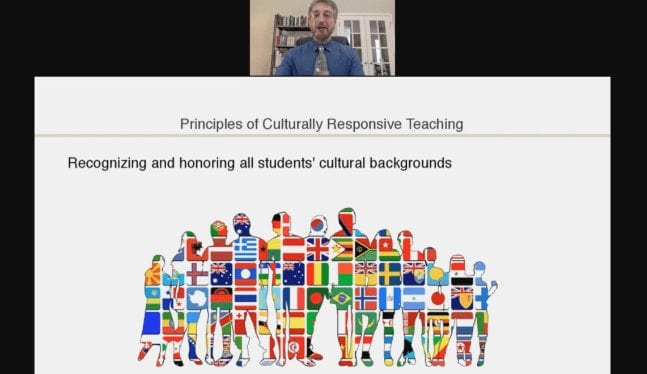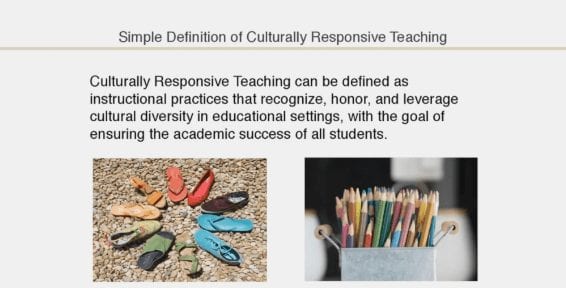Six Questions to Ask to Build a Culturally Inclusive Classroom
It’s almost impossible to ignore that K-12 classrooms in the U.S. are filled with students from increasingly diverse cultural backgrounds: race, nationality, religion, economic, etc. Many teachers, though, still aren’t sure how to move from recognizing the diversity to creating a mutually responsive learning environment. In his presentation, “Culturally Responsive Teaching: Key Principles and Practices,” Dr. Ken Springer, Professor of Education and Chair of the Department of Teaching and Learning at Southern Methodist University, explained why teachers should view diversity as an opportunity and what questions to ask to ensure they’re building a culturally inclusive classroom.
Question 1: What do I know?
Teachers should investigate what sources of diversity they have in their classroom. This can come from institutional knowledge about the students and their families, asking the kids questions about their culture as appropriate, talking with other teachers, and having conversations with the parents. The key is to not make assumptions but to do personal investigations.
Question 2: What do I notice?
In addition to actively learning about students’ backgrounds, teachers also need to make continuous observations. While some behaviors, like being deferential to authority figures, may be cultural, they could also be a part of the student’s personality. Teachers need to get to know all aspects of their students.
Question 3: How do I feel?
Teachers need to constantly reflect on their own behaviors and any biases they have brought into their classroom. The idea is to understand how teachers might be reacting to different student populations and check their own attitudes and assumptions.
Question 4: What do I say?
This question applies to both students and parents. Educators should make sure that what they’re saying in the classroom isn’t reinforcing stereotypes; outside of school, they need to be culturally sensitive. For example, don’t suggest after school activities if the parent needs to take off work to provide transportation.
Question 5: What materials do I use?
Here, Springer advocated for teachers providing lessons and content that reflect the students in the classroom. When students can see themselves in their learning materials, they are more invested in the lessons.
Question 6: How do I teach?
Springer offered four principles of culturally responsive teaching.
- Have high expectations for all students. Research shows a teacher’s expectations influence student performance. Teachers should work with the students to set learning standards and make sure the goals are understood.
- Recognize and honor all students’ cultural backgrounds. The goal is to teach students to respect others’ heritage and develop an inclusive environment. For instance, let students teach their peers about their holidays—and make sure that assessments and project due dates don’t occur on the holidays.
- Build bridges between home and school. Make the curriculum meaningful for students from different backgrounds.
- Recognize that students are individuals as well as members of cultural groups. In other words, a student’s culture is just one part of who they are. Even though the teacher does need to make great efforts to understand the diversity in the classroom, “the broader message here,” said Springer, “is that you have to understand and engage with each student as an individual.”
This edWeb broadcast was sponsored by VIPKid.
This article was modified and published by eSchool News.
About the Presenter
Dr. Ken Springer is a professor of education and Chair of the Department of Teaching and Learning at Southern Methodist University in Dallas, Texas. Dr. Springer has an abiding interest in culturally responsive teaching. He has worked with teachers in multicultural settings in the Dallas Metroplex, served as a board member and program director for Mi Escuelita, taught classes on diverse learners to teachers pursuing graduate degrees, and spent a year as a visiting professor in China, where he continues to maintain professional connections through teacher training, research on differences between US and Chinese students, and consulting activities.
Join the Community
Helping ELL/ESL Students Succeed is a free professional learning community on edWeb.net that focuses on supporting ELL/ESL students to improve their academic achievement and English language learning.






Comments are closed.